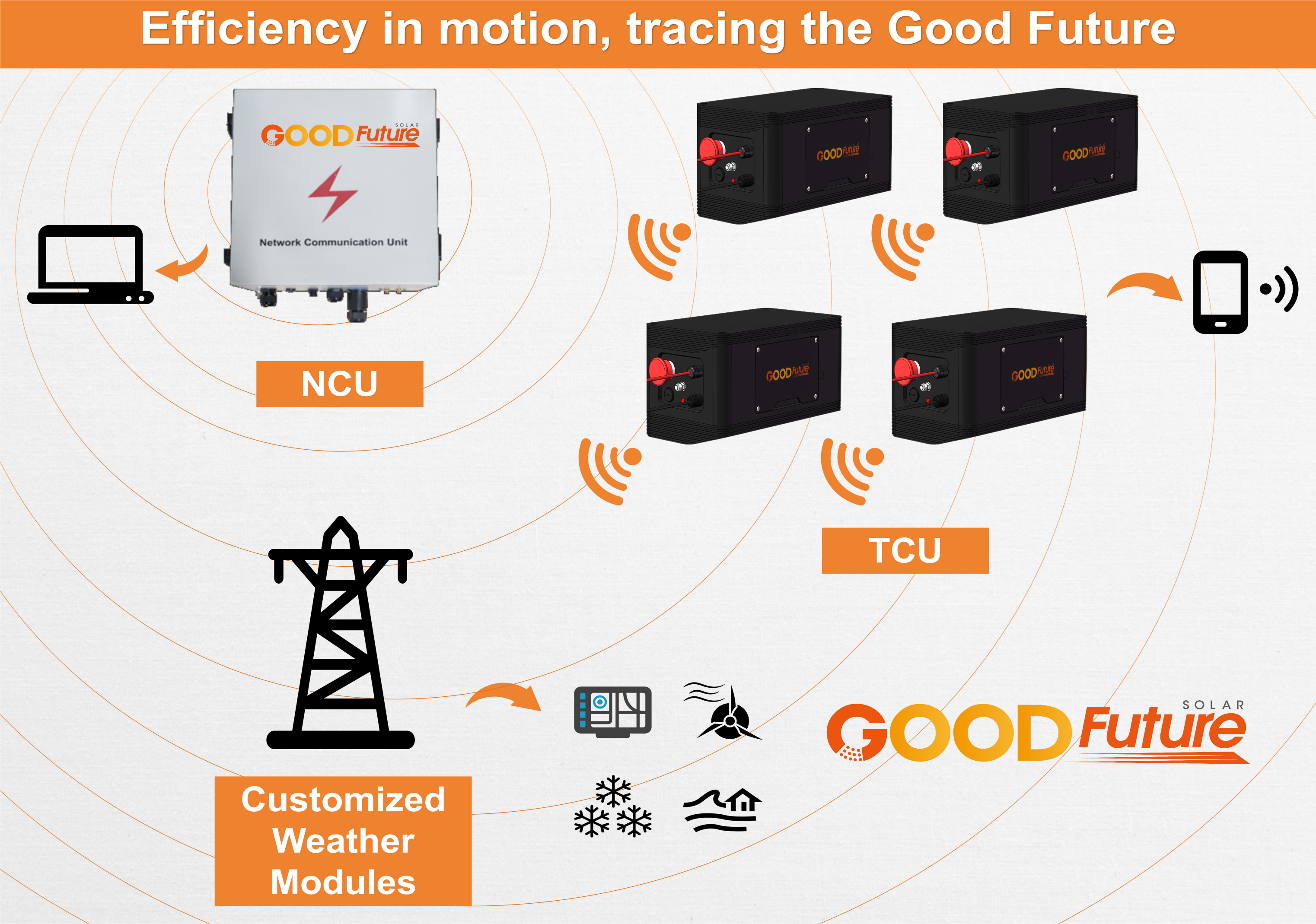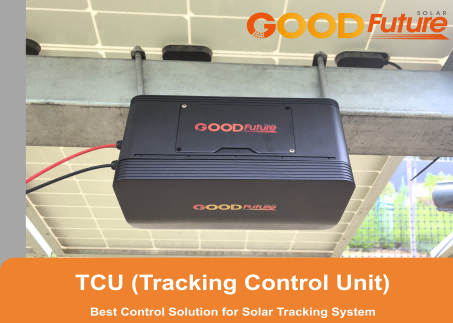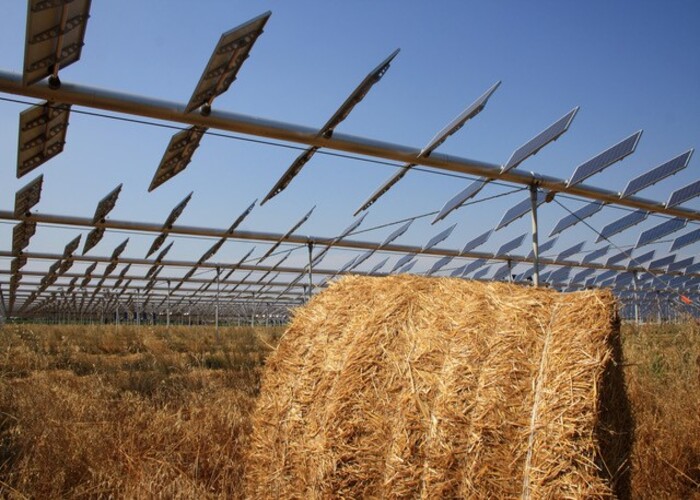Email:info@goodfuturesolar.com
Tel: +86-371-63966669
Email:info@goodfuturesolar.com
Tel: +86-371-63966669

In the rapid development of photovoltaic power generation systems, the market has favored Horizontal Single Axis Solar Trackers (HSAT) due to their high power generation rate, low maintenance cost, and simple installation. With the global installation of horizontal single-axis trackers reaching 92GW, a critical issue that has consistently concerned project owners is shading. The key to addressing this issue lies in an advanced algorithm embedded in the solar tracking controller. As a talented developer in this field, Good Future proudly introduces our Tracking Control Unit (TCU), equipped with an advanced Backtracking Algorithm to ensure optimal performance under all conditions. What is the Backtracking Algorithm? The backtracking algorithm is a crucial innovation in solar tracking technology. Its primary function is to dynamically adjust the angle of solar panels to minimize mutual shading between them, thereby enhancing the system’s overall energy output. This is particularly significant for Horizontal Single Axis Solar Trackers (HSAT), where panels are typically arranged closely together, making them prone to shading issues. How Does the Good Future TCU’s Backtracking Algorithm Work? 1. Shade Avoidance: At the core of Good Future’s backtracking algorithm is the goal of reducing mutual shading between panels. During low solar angles (such as in...

As the proportion of horizontal single-axis solar trackers in global solar power systems continues to increase, project owners are increasingly concerned about how these trackers can ensure project safety under the rising frequency of extreme weather conditions. The Horizontal Single-Axis Solar Tracker (HSAT) is notable for its efficiency and adaptability. However, these systems must be designed to withstand and operate under extreme weather conditions, such as heavy rain, flooding, snowfall, and strong winds. The seamless operation of HSAT systems in such environments relies heavily on the coordinated efforts of several critical modules: the Tracker Control Unit (TCU), Network Control Unit (NCU), wind sensors, and GPS modules. Tracker Control Unit (TCU) The TCU is the brain of the solar tracker system. It controls the movement of the solar panels to ensure they are always positioned optimally to capture the maximum amount of sunlight. This unit processes data from various sensors and modules to adjust the angle of the panels throughout the day. Network Control Unit (NCU) The NCU manages communication between multiple tracker units across a solar farm. It ensures that all trackers operate in a coordinated manner, sharing data and making collective decisions to optimize performance and safety. Wind Sensors...

The Network Communication Unit (NCU) plays a crucial role in the operation and management of horizontal single-axis solar tracker systems. Its primary functions include enabling communication, data transmission, control, and monitoring of the system to ensure optimal performance and efficiency. Here’s a detailed look at the role of the NCU in such systems: 1. Data Transmission and Communication a. Communication Hub The NCU acts as the central communication hub for the entire solar tracker system. It facilitates data exchange between different components such as sensors, actuators, and the main control unit. This ensures that all parts of the system are synchronized and operating cohesively. b. Protocol Support It supports various communication protocols like Modbus, CAN bus, or TCP/IP, which are essential for interoperability with other devices and systems. This ensures seamless integration and communication across the system. 2. Control and Coordination a. Real-Time Control The NCU enables real-time control of the tracker motors and actuators based on data received from sensors that monitor sunlight intensity, panel orientation, and environmental conditions. This allows the system to adjust the angle of the solar panels dynamically to maximize solar energy capture. b. Command Execution It receives commands from the central controller and executes...

How to Choose the Best TCU Solution for Your Solar Tracker System In the dynamic world of solar energy, choosing the right technology Tracking Control Unit (TCU)/solar tracker control unit for your solar tracker system can significantly influence your project’s success. With various options available in the market, understanding the key factors to consider will help you make an informed decision that maximizes efficiency, reliability, and return on investment. Here’s a guide to help you choose the best TCU solution for your solar tracker system. 1. Understand Your System Requirements Before diving into the specifics of different TCUs, it’s essential to have a clear understanding of your solar tracker system’s requirements. Consider the following questions: – What type of solar trackers are you using (single-axis or dual-axis)? – What is the scale of your project? – What are the environmental conditions at the installation site? – What level of precision and control do you need? 2. Evaluate Compatibility Ensure that the TCU you choose is compatible with your existing or planned solar tracker system. Compatibility includes both hardware and software aspects. The TCU should seamlessly integrate with your trackers, sensors, and other control systems. Look for TCUs that support standard...

In the pursuit of sustainable energy solutions, solar power stands out as a frontrunner. Its abundant, clean, and renewable nature makes it a key player in the transition towards a greener future. However, to truly harness the potential of solar energy, maximizing its efficiency is paramount. This is where innovative technologies like single-axis solar tracking systems come into play. Understanding Solar Tracking Systems Solar tracking systems are mechanisms that orient solar panels or arrays to follow the path of the sun, optimizing the angle of incidence for maximum energy capture throughout the day. While fixed solar panels are stationary and positioned at a fixed tilt angle, solar tracking systems dynamically adjust the orientation of solar panels to track the sun’s movement. The Efficiency Boost of Single-Axis Tracking Single-axis solar tracking systems operate by rotating solar panels along a single axis, typically the north-south axis. This rotation allows the panels to follow the sun’s daily east-to-west path across the sky. While not as complex as dual-axis systems, which also adjust for seasonal variations in the sun’s position, single-axis trackers offer significant efficiency gains compared to fixed installations. Key Benefits of Single-Axis Solar Tracking Systems Increased...

New findings from Italy suggest that wheat cultivation in elevated agrivoltaic systems may lead to better-quality crops with enhanced nutritional value, particularly beneficial for livestock. A collaborative effort by the CNR Institute for Bioeconomy, the University of Florence, and agrivoltaic specialist REM Tec srl, investigated the performance of wheat in an agrivoltaic setup spanning 11.4 hectares in Borgo Virgilio, Mantua province. The experiment utilized 7,680 Bisol panels and 768 trackers positioned at a height of 4.5 meters, covering approximately 1.3 hectares. Dividing the area into sections, the team compared wheat growth under different levels of photovoltaic coverage. They observed three sections with a ground coverage ratio (GCR) of 13%, three with a GCR of 41%, and three reference sections devoid of panels and shading structures. Over two years of experimentation, researchers noted a limited reduction in wheat yield during the waxy maturation phase under standard trackers (GCR = 13%). However, in panels with increased shading (GCR = 41%), the reduction reached 29.6%. Lucrezia Ghidesi, Business Developer at REM Tec srl, highlighted, “The reduction in irradiation significantly altered the stature of wheat plants, impacting the quality of the fodder biomass.” Analyzing various parameters including dry matter, ash, crude protein content, and...